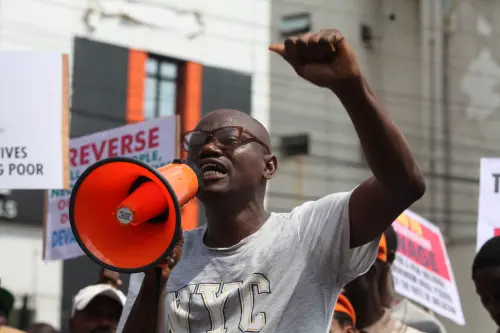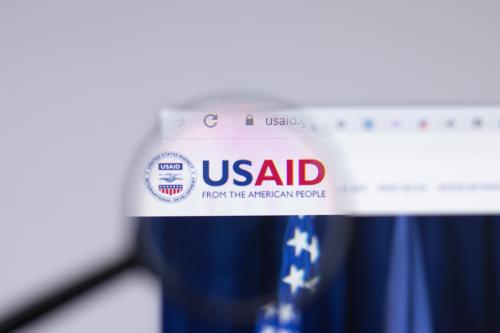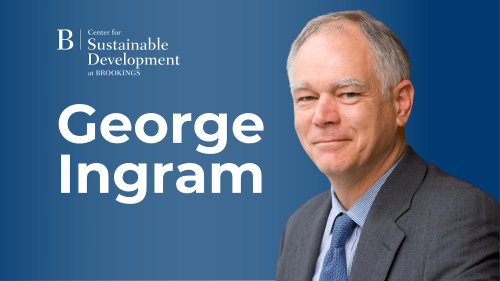Editor’s Note: Recent economic events in the United States have provided a not-so-subtle reminder that a financial crisis is first and foremost a political phenomenon. Raj M. Desai explores what the United States can learn from the political economy of the financial crises that have roiled emerging markets.
Throughout the 1990s, instability and electioneering infused the financial turmoil in emerging markets around the world. When Mexico suffered a peso collapse in late 1994, the country had recently been through assassinations, a dirty election and an armed guerilla movement in Chiapas. During the Asian financial crises after 1997, massive protests against IMF-led adjustment programs took place in Korea, Indonesia and Thailand. Meanwhile, Malaysia’s Prime Minister Mahathir railed against George Soros, famously calling speculative attacks against Asian currencies “akin to terrorism.” The Russian financial crisis in 1998 evaporated domestic support for Yeltsin, who thereafter had to contend with an emboldened opposition in parliament, and a Communist party-led general strike. In Brazil following the devaluation of the real, a truck drivers’ strike paralyzed major highways while ranchers, farmers, labor unions, landless peasants and leftists descended on Brasilia to demand relief. And in Argentina at the end of 2001, a series of violent clashes between demonstrators and police forced President De La Rúa to flee the capital.
A new IMF study examines 124 episodes of “systemic banking distress” (defined as situations where all bank capital is wiped out) in 102 countries. Using these data, along with available information on governmental characteristics of these countries, there are some lessons from the experiences of those countries.
First, crises don’t always lead to governmental collapse — but changes in government keep recovery costs down.
Several of the financial crisis episodes in the 1990s prompted changes in government — and in a few cases, regime collapse. Korea, Argentina and Brazil, as well as the Czech Republic, Poland and Turkey (among other countries), all saw incumbents thrown out in elections following currency problems. In non-democratic states such as Mexico and Indonesia, incumbents began to lose their grip on power. Between 1994 and 2000, a series of opposition-party governors were elected in several Mexican states, eventually paving the way for Vincente Fox’s election and the end of 80 years of single-party rule. In Indonesia, amid riots sparked by rising prices for rice and kerosene, Suharto’s 30-year regime came to an end in 1998. But political change is not the norm: The data show that in less than one-third of the counted episodes did governments change hands within three years following the onset of the crisis.
However, countries where governments changed ended up better off. The concentration of economic power usually means that investing in influence to obtain privileged treatment is regarded as any normal economic activity. In many of these crisis countries, it was common knowledge that paying off public officials to obtain benefits — favorable legislation, judicial rulings, regulatory forbearance — was sometimes as lucrative as profit maximizing. But it was also, naturally, a recipe for widespread moral hazard. Whether for grupos in Latin America, chaebol in Korea or financial-industrial groups in Russia, large portions of business were acquired through the cultivation of close ties with governments. Consequently, shifting political winds mean that those who lose power can no longer deliver benefits to certain favored private business and financial interests. Those groups, then, are less likely to avoid shouldering the costs of crisis resolution.
The second lesson is that re-establishing credibility can be just as hard as re-establishing solvency.
In addition to political instability, financial collapse also breeds policy uncertainty, something which can be more harmful to prospects for recovery. Instability and uncertainty are not the same. The former refers to frequent changes of government, which in extreme circumstances can certainly harm prospects for recovery. Uncertainty, on the other hand, can be present even where governments are stable — and is more likely to be present under conditions of systemic financial distress. Under financial-crisis conditions, investors, depositors and entrepreneurs complain that financial reforms promised are broken, that implemented policies are poorly enforced or reneged upon and are arbitrarily interpreted — and subject to frequent and unpredictable changes.
Many market- and country-based risks are always present and investors will seek commensurate returns, or they will insure themselves against these risks. These risks may be influenced by governments but they are not typically under government control. By contrast, risks created by policy and regulatory instability are fully under government control and — short of expropriation — are generally not insurable. Re-establishing credibility in governmental actions — convincing investors that their commitments will not be eroded — can require wide-ranging institutional reforms.
The third lesson is that governments will be unable to protect the most vulnerable.
In over two-thirds of the crises, devaluation, capital flight and austerity measures produced wage and income declines that persisted for more than three years. Resulting fiscal constraints, of course, affected those households most reliant on publicly funded social services. Although IMF lending typically included agreements to maintain spending levels for certain basic services, these crises were wrenching events for affected households. Who took a hit? The evidence varies. In Latin America, crises often squeezed the poorest. In the Asian cases it was the so-called “striving classes” — the lower-middle income, upwardly mobile households, who were pushed back into poverty (at least temporarily).
But governments everywhere, despite their best intentions, are generally ill-prepared to help the hardest-hit groups, whoever they may be. There is some evidence from crisis economies in the 1990s that, post-crisis, tax and expenditure patterns actually became more regressive, not less.
The fourth lesson is that backlashes do not necessarily mean a turn to the left, but center-left governments are more likely to limit economic collapse.
Based on the third lesson, and given that vulnerable groups outnumber those that escape from harm, one might expect strong anti-market backlashes to be followed by the resurgence of left-wing movements. While it is plausible that systemic financial distress laid the groundwork for leftist strength after several years — Latin America’s turn to the left in the 2000s being an example — the evidence for leftward movements in the immediate aftermath of crises is slim. In only 32 out of 121 cases for which there is information did governments move to the left inside three years after the crisis started.
Surprisingly, countries that were ruled by leftist parties at the start of the crisis and/or three years afterwards suffered less of an output collapse. On average, countries in which the executive was in the hands of left-wing parties at any time during the crisis suffered an output collapse of 14%, while for non-left governments’ output fell 20%.
An examination of financial recovery in several countries suggests that labor-supported parties serve as an effective check on corporate excess. In retrospect, recovery programs that were designed and implemented without formal support from key labor constituencies seem to have been prone to political stalemates at later dates, when the electoral landscape for the party in power may have changed. By contrast, in countries such as Poland and Korea, labor-friendly governments managed to obtain considerable support for recovery programs up front. The pattern suggests that the Chilean crisis in the 1980s is an exception to the rule, as Chilean authorities did not consult — and indeed excluded — both employers associations and labor from the financial restructuring program.
The fifth lesson is that centralized asset-recovery regimes have a poor record. It should be noted that government purchases of bad assets was rare — used only in Mexico, Japan, Bolivia, Czech Republic, Jamaica, Malaysia and Paraguay. Output declines and the gross fiscal cost were approximately twice as large in these countries compared to countries that did not opt for a centralized approach to recovery. Why such a dismal record?
First, by removing bad assets from banks, centralized asset-management units (AMUs) do not force institutional “learning” where it is needed most — namely, in the core lending practices of financial institutions. In the Czech Republic, for example, banks continued to make bad loans long after most of their bad debt burdens were removed and placed in a “hospital” bank. Second, AMUs are prone to bureaucratic misuse and corruption and rarely die when their missions have been completed. AMUs, once created, tend to perpetuate themselves, usually through a coalition of bankers and bureaucrats who support their continuation. Third, AMUs, as all state-owned agencies, are susceptible to external political pressures, as well as intra-governmental disputes and turf wars that limit their effectiveness.
The Brookings Institution is committed to quality, independence, and impact.
We are supported by a diverse array of funders. In line with our values and policies, each Brookings publication represents the sole views of its author(s).



Commentary
On the Politics of Financial Meltdowns
October 8, 2008